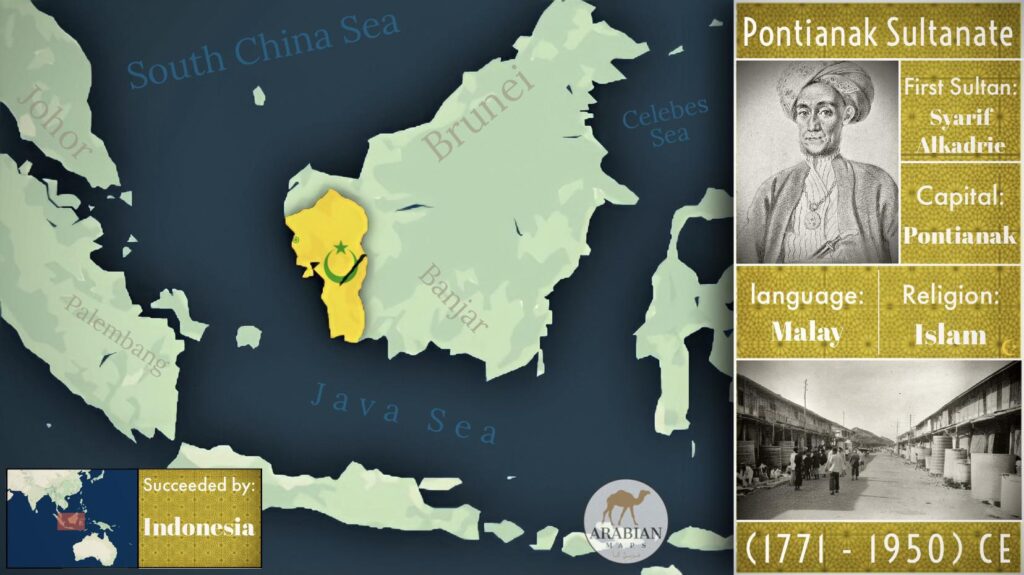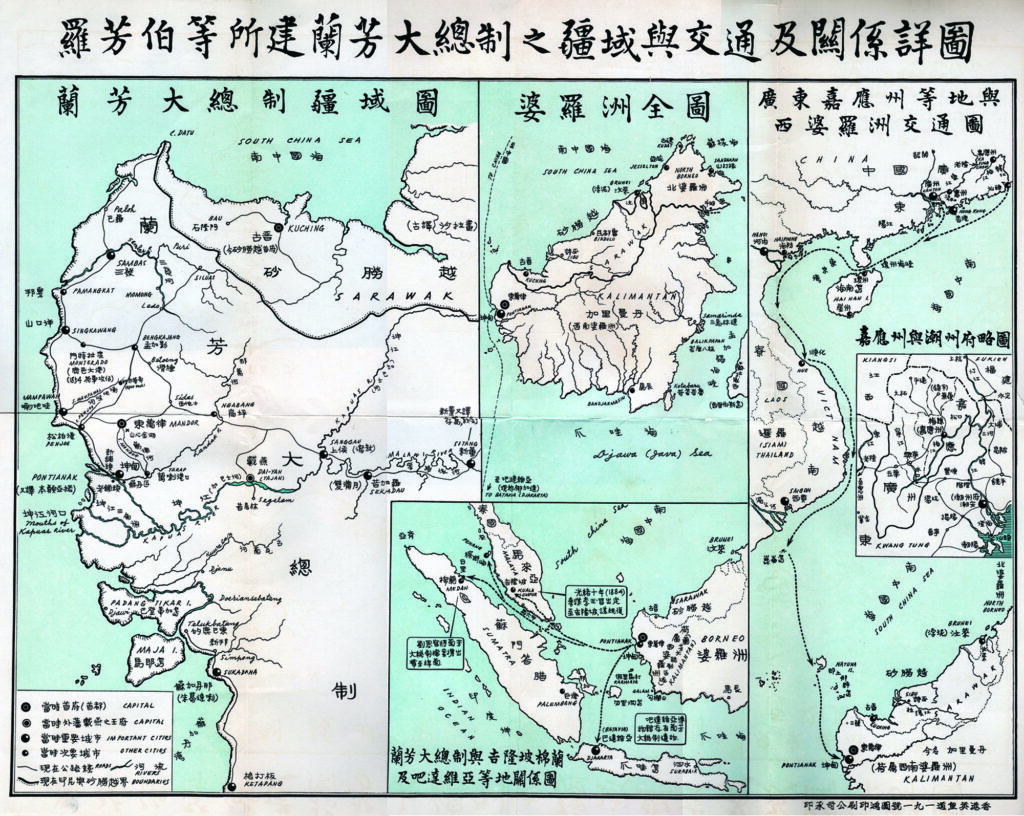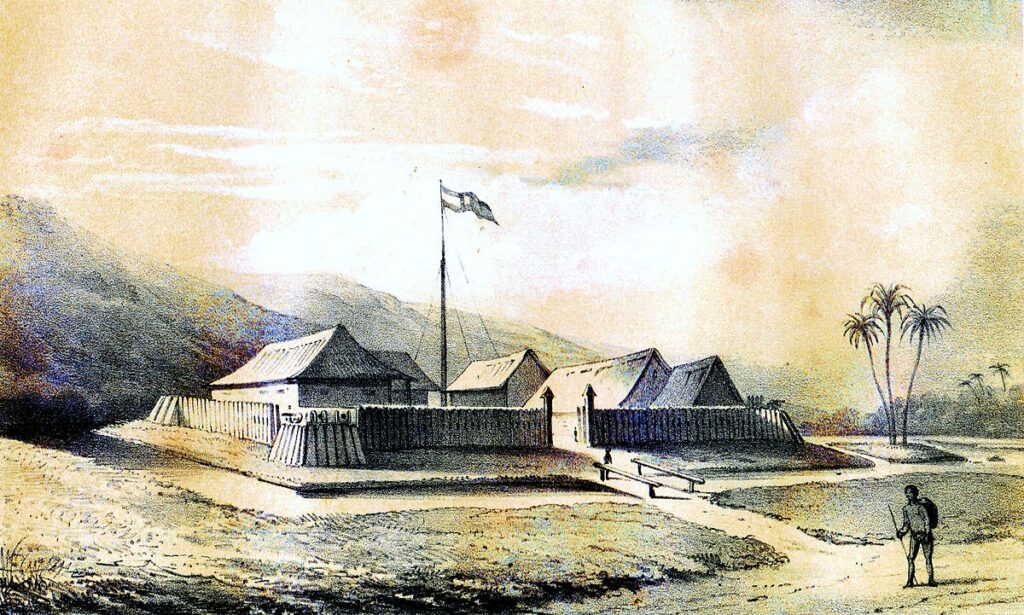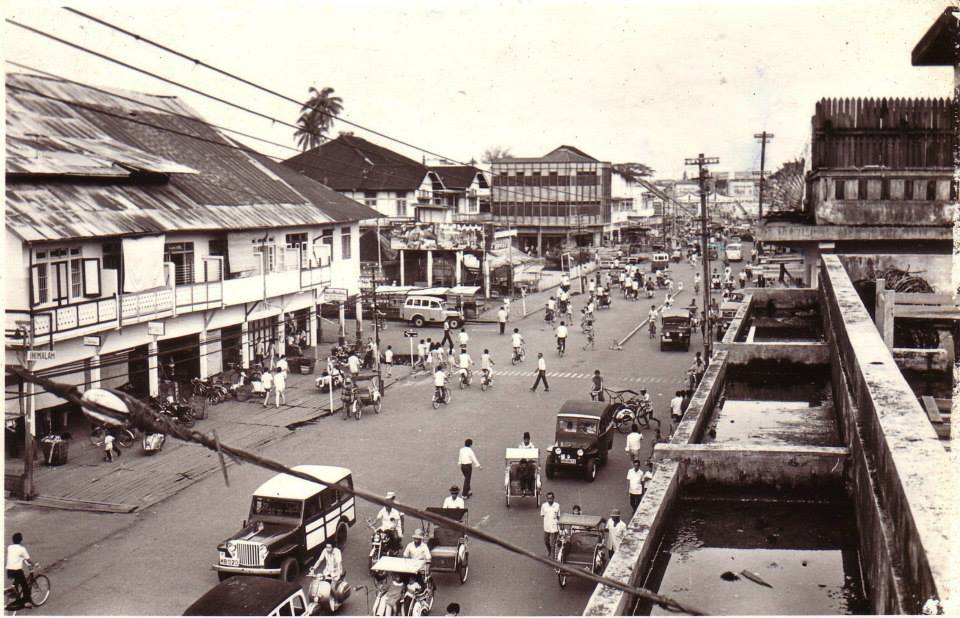“He led them by a straight way to a city where they could settle.”
Psalm 107:7 (NIV)
“I found Rome a city of bricks and left it a city of marble.”
Caesar Augustus (63 BC- AD 14)
Aerial Photo of Pontianak City 2019

https://www.perempuanoke.com/2019/11/aerial-photo-pontianak.html
Front Street and the Chinese quarter in Pontianak, Borneo, 1934

https://en.wikipedia.org/wiki/Pontianak#/media/File:Voorstraat_en_Chinese_wijk_te_Pontianak,_Borneo,_KITLV_124744.tiff
1.0 Geographical Overview
Location: Pontianak, situated in Borneo, serves as the capital of West Kalimantan Province. Spanning an area of 107 km², it eclipses Barcelona City in size.
Demographics: As of 2020, Pontianak boasts a population of 668,000. Projections suggest a significant surge to 2.7 million residents by 2050 due to an influx of new migrants.
Geographical Position: Nestled on the western coastline, Pontianak gazes out upon the South China Sea.
Tropical Climate: Pontianak, located at 0° of the equator in West Kalimantan, has a tropical climate. It gets around 3,154 mm of rain annually, and the average temperature is 31.8°C.
Local Insights:
- Origin Story: The name Pontianak comes from a legend about a female vampire who posed as a woman and killed men with a nail to the neck. According to the story, Sultan Abdurrahman Alqadrie put an end to her reign with cannons.
- Equator Connection: Pontianak sits right on the equator, earning the title “Equatorial City.” Its motto is “Pontianak Bersinar” (Pontianak Shines). It’s located at the delta of the Kapuas River and Landak River, enjoying plenty of sunshine and rainfall.
- Cultural Diversity: With a significant Chinese community dating back to the 7th century, Pontianak was the gold hub of Borneo in the 18th century.
Unique Attributes:
- Gateway Role: Pontianak serves as a gateway to West Kalimantan, offering a quiet space with a sparse population, plenty of sunlight, and rainfall.
- Strategic Spot: Positioned strategically, Pontianak provides access to the Strait of Malacca and the Indian Ocean.
- Border Connections: Sharing a 966 km border with Sarawak, West Kalimantan has a unique cultural blend.
Distance from Pontianak to cities in Borneo
| City | Distance (km) |
| Banda Sri Begawan | 825 |
| Banjarmasin | 689 |
| Balikpapan | 844 |
| Kota Kinabalu | 1,002 |
| Kuching | 207 |
| Samarinda | 886 |
| Tarakan | 988 |
Distance from Pontianak to cities in Asia Pacific
| City | Distance (km) |
| Darwin | 2,745 |
| Hong Kong | 2,534 |
| Jakarta | 738 |
| Shanghai | 3,700 |
| Singapore | 627 |
| Sydney | 5,759 |
| Tokyo | 5,065 |
Unique attributes:
Former Dutch East Indies colonial administration with a rich blend of cultural influences from various ethnic groups.
3.0 Economy
Industries:
- Agriculture, food, chemical, mineral fuel, fisheries, trading, and manufacturing are the largest industries in Pontianak.
Historical Significance:
- Pontianak is part of the Brunei Darussalam-Indonesia-Malaysia-Philippines East ASEAN Growth Area (BIMP-EAGA), historically significant as a participant in the maritime silk route and spice trade.
Major Industries in Pontianak:
- Tourism:
- Old-world charm with a boat ride along the Kapuas River.
- Unique Equator Monument.
- Diverse local culinary fusion.
- Potential as an ecotourism destination with rainforests, coral reefs, and cultural richness.
- Industry:
- Light industries in food, agriculture, transportation, shipbuilding, and manufacturing.
- Landak Industrial Estate and Ketapang Industrial Estate are major industrial parks.
- Airport:
- Supadio International Airport, handling 3.8 million passengers per year.
- Direct flights to major cities in Indonesia and other Malaysian cities.
- Seaports:
- Pontianak Port catering to agriculture, mining, and processing industries.
- Major exports include aluminum oxide, rubber, wood, palm oil, and coconut.
- Kijing Terminal Pontianak Port is a new terminal with a 5,000-hectare Special Economic Zone.
- Oil & Gas:
- West Borneo Economic Corridor is BIMP-EAGA’s oil and gas corridor.
- Gas pipeline projects announced, enhancing infrastructure.
- Plans for trans-Kalimantan gas pipelines for Borneo Island’s energy needs.
- Trading:
- Trading and investment activities at border crossing points between Pontianak–Kuching.
- Common crossings: Aruk, Entikong, Nanga Badau.
- Cross-border manufacturing includes bauxite, alumina, rubber, palm oil, wood products, and food processing.
- Other border crossings: Jagoi Babang (Bengkayang) and Jasa (Sintang).
- Agriculture:
- Tropical fruits, rice, cassava, corn, palm oil, rubber, and livestock.
- Export markets for tropical fruits and vegetables in North Asian markets.
- Commercial:
- Real estate, trading, shopping malls, financial, and property development.
Unique Attributes:
- Pontianak offers unexplored natural resources and invites investors in agriculture, mining, forestry, aquaculture, horticulture, and tourism industries.
4.0 Language
Common Languages:
- Malay, Dayak, Chinese, and English are the most prevalent languages in Pontianak.
Ethnic Composition:
- Pontianak boasts a diverse ethnic composition:
- Large Chinese population (33%)
- Malay population (29%)
- Dayak population (13%)
- Javanese population (10%)
Unique Feature:
- The widespread use of the Malay language serves as a unifying factor, facilitating effective communication in government, business, and the local community.
5.0 Investment Opportunities
5.1 New Migration
- Population expected to increase from 0.5 million to 2.7 million by 2050.
- Investment opportunities in foreign investments and creative businesses.
- Expansion of city area to include Northern, Western, Southern districts, and East region.
5.2 Airport
- Upgrading existing airports for new migrants, business, and tourism.
- New airport in Kimanis to be part of Borneo hub for domestic, regional, and international travel.
- Supadio International Airport as the gateway to West Kalimantan.
5.3 Education
- Existing international schools: Immanuel Christian School, Tunas Bangsa School, Pelita Cemerlang Secondary School.
- Anticipated demand for 7–10 new international schools for 12,500 foreign students.
5.4 Tourism
- Untapped potential in quaint cities with a 1960s feel.
- Opportunities in hospitality infrastructure development.
- Need for international tourism management specialists.
- Investment sectors include exploration of new tourist destinations, hotels, theme parks, wildlife, rainforest, and diverse culture.
5.5 Infrastructure
- New interstate highways between Palangka Raya, Banjarmasin, and Samarinda.
- Improved connectivity highways to Singkawang, Entikong border checkpoint.
- Trans-Kalimantan rail network connecting major capital cities.
- New water treatment plants for a population of 2.7 million.
5.6 Property Development
- Residential: Planning for an additional 2 million dwellings.
- Commercial: Diverse-themed shopping malls for tourists.
- Industrial: Industrial parks for agriculture, trading, and manufacturing industries. Ketapang Priority Industrial Zone for specialized processing and manufacturing.
5.7 Special Economic Zones (SEZ)
- Food: Processing and manufacturing in food industries.
- Agriculture: Downstream industry in rice, sugar, pepper, palm oil, poultry, starch derivatives.
- Cold Chain: Formation of a cold chain network to make Borneo a logistics hub.
- Oil and Gas: Infrastructure support for the BIMP-EAGA growth corridor.
- Mining: Aluminium and bauxite processing SEZ.
- Aquaculture: Marine, seaweed, and fisheries products for export.
- Rubber: Plantation and processing mills for the rubber industry.
- Shipbuilding: Specialization in the shipbuilding industry.
- Timber: Reforestation plantation and downstream sawmills for furniture and export industries.



